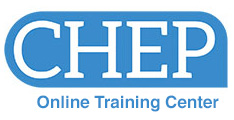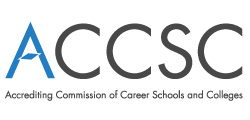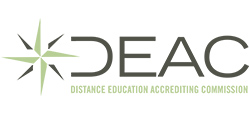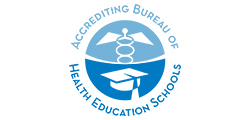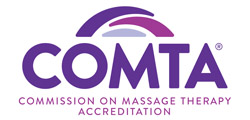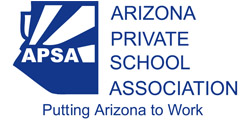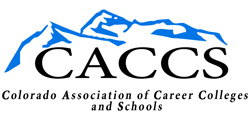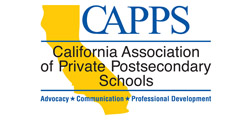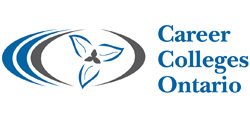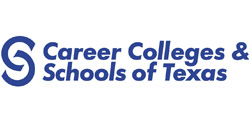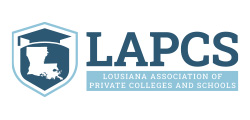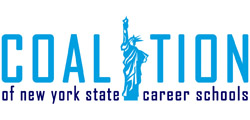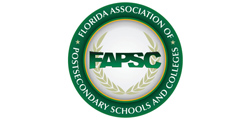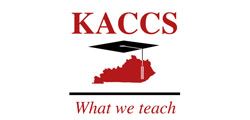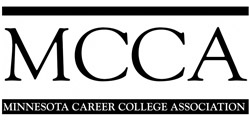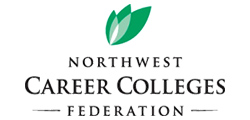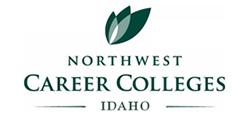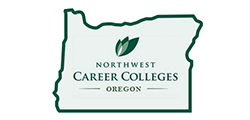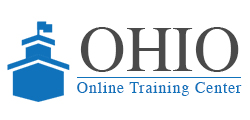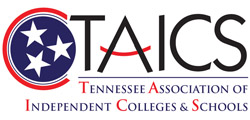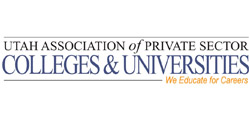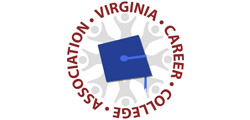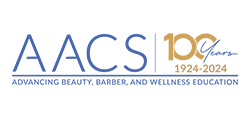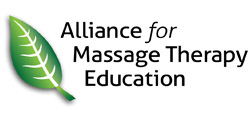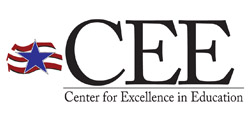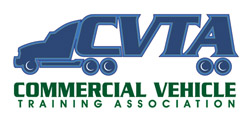Badge Evidence | Completed Courses (4 Hours Each)
ACCSC101Fulfilling the Standards of Accreditation: Administration
This course "pulls back the curtain" for schools to help them better understand the principles and purposes of the ACCSC Standards of Accreditation. ACCSC101, along with the accompanying course ACCSC102, lays out the standards in line with the way schools are typically structured to better help you comprehend the important relationship between each standard and each aspect of running a compliant, accredited school. This course addresses the standards on the administrative side of your school, such as standards that relate to operations, admissions, and financial aid.
ACCSC102Fulfilling the Standards of Accreditation: Academics
This course focuses on the ACCSC Standards of Accreditation which directly tie to the academic areas and program requirements for an accredited school. The course includes information on program development and design, educational policies and procedures, faculty, student services, and educational delivery methods.
CM102Raising the Bar - Compliant Communications with Students
This course is designed for employees of all roles and levels at institutions that participate in federal financial aid programs. The course provides an awareness of prohibited acts which could adversely impact operations, and covers the requirements which must be adhered to in order to maintain good standing with state* and federal regulations as outlined in the Program Integrity rules. Emphasis is on areas of misrepresentation related to advertising and recruitment activities, interactions with prospective students and appropriate communication of disclosures and other publications.
*This course currently covers the regulations for the following states: AZ, CA, CO, FL, GA, IL, IN, KS, LA, MA, MI, MN, MO, MS, NC, NM, OH, OK, OR, PA, SC, TN, TX, VA, WA. Course participants can select specific state(s) at the beginning of the course to customize the training content to their state.
CM140Title IX and VAWA Training: Building Safer Campuses
This course is designed to assist personnel at all levels of an educational institution in the understanding of the provisions of Title IX of the Education Amendments of 1972 ("Title IX") as amended on August 1, 2024, and the Clery Act as amended in the Violence Against Women Reauthorization Act of 2013 ("VAWA"). These laws require that all individuals in an educational institution understand and comply with the laws in terms of what is prohibited behavior in relation to sex-based harassment and/or sexual violence, and what steps are to be followed when such prohibited conduct occurs. This course gives the participants information about the laws, as well as procedures to follow, to provide for the rights of all individuals under the laws. It also provides additional resources to assist educational institutions in continuing to build and strengthen their Title IX and VAWA policies, procedures and training throughout the year.
CM141FERPA and Privacy: A Practical Approach
The Family Educational Rights and Privacy Act of 1974 (FERPA or the Buckley Amendment) is a federal law in the United States designed to provide students with access to, and the privacy of, their educational records. The law applies to students in higher education and educational institutions that receive funding under a program administered by the U.S. Department of Education. This course is designed to provide participants with a working knowledge of FERPA guidelines to ensure proper handling of educational records and other institutional requirements.
CM251Students with Disabilities: Legal Obligations and Opportunities
This course provides faculty, staff, and administrators with an understanding of the legal mandates regarding equal access for students with disability. More importantly, it provides a practical framework to help institutional personnel know what to say and do in the context of their defined role and interactions with students with disabilities. Topics include the civil rights nature of applicable Federal law, definitional issues, the impact of disability on traditional education activities and pursuits, reasonable accommodations, and the unique responsibilities of faculty, staff, and administrators as prescribed by their position.
EL102Online Teaching Techniques
Your degree of success as an online instructor relies heavily on several factors, among which are your level of preparedness before the date on which the course is launched; your ability to make a smooth transition into the roles and responsibilities associated with teaching in an online environment; and the effectiveness and efficiency with which you manage learners, instructional transactions embedded in the course as well as the learning environment. In this course, you will learn how to project your authority and presence into the e-learning environment, build a relationship with each learner, promote and nurture learner participation, provide informative and constructive feedback in a timely manner, minimize attrition, manage communications, manage unacceptable behavior and resolve disagreements.
EL103Teaching Online: A Student-Centered Approach
This course will provide you with the knowledge and skills to author, teach, assess, and revise successful online courses. You will learn to develop a course framework with consistent modules. Constructing an online community and a dynamic syllabus are important in helping you communicate with students. You will also learn how to develop an assessment plan including self- and peer-assessment as you progress through the course. No online course is complete without a comprehensive revision cycle. This course will walk you through the process of "closing the loop" to create a complete revision and improvement plan for your online course. We will provide you with ideas for student-centered learning, with activities and intellectual interactions using a variety of technology tools.
EL104Teaching and Organizing a Virtual Learning Environment
This course will provide you with basic information to teach in a virtual learning environment and understand the importance of organizing course content. You will learn about the important role technology tools play in teaching and organizing an online course. You will also learn the difference between synchronous and asynchronous learning. As the components of each are discussed, you will further identify appropriate methods, develop guidelines, organize content, and establish a pattern of teaching for each method.
EL105Online Language: Communicating with Students
This course will provide you with information to help you effectively communicate with students and encourage communication among students in an online environment. You will learn the importance of facilitating instructor-to-student (I2S), student-to-instructor (S2I), and student-to-student (S2S) communication. Technology tools play a vital role in the communication process and several are discussed in this course. In addition, discussion is also provided to help you further understand how to manage and measure communication in an online course and help students communicate effectively.
EL107Designing Dynamic and Technology-Rich Learning Environments
This course outlines the main characteristics of "dynamic" course design for blended instruction and highlights effective teaching methods that facilitate the learning process. Participants in this course will have an opportunity to customize the design principles and methods presented to suit their individual professional context.
EL108Preparing Students to Become Good Online Learners
This course will provide you with strategies and techniques to help prepare students for the online environment. To do so, you must also assess your strengths and weaknesses as an online instructor. As you help students assess their readiness for online learning, you are also preparing them for the expectations and realities of the online environment. By identifying students' strengths and weaknesses, you can provide guidance to help them achieve the learning outcomes. This course not only notes the necessary technical skills, it also discusses non-technical skills as well as techniques for successful learning and helping students develop their online persona.
EL112Workload Management Strategies for Teaching Online
This course will provide you with strategies and techniques to help you reduce your workload in the online environment. The course begins with an overview of good principles for education and questions to consider prior to developing Workload Management Strategies (WLMS). This course also provides WLMS for teaching online, communicating and collaborating, and revising your online course.
EL114Respecting Copyrights and Leveraging Available Resources
This course provides a basic overview of the background and history of the usage of copyrighted materials in U.S. education. Copyright usage is an often-misunderstood area of education. This course will help build an awareness of the U.S. Copyright Law and its various components. Instructors will be given practical examples on how to correctly use copyrighted materials in their classrooms. In the 21st century, many students do not recognize common concepts such as pirating of music and videos. Instructors are on the frontline in education and can educate newer generations on the ideas of fair use, intellectual property, and piracy issues.
EL116The Asynchronous, Self-Directed Learning Model
This course will provide you with a basic overview of designing and implementing asynchronous, self-directed online courses effectively. It will review the differences between synchronous and asynchronous online courses. Traditional components of face-to-face courses such as readings, written assignments, and discussions work well in the asynchronous online class environment, but what happens to laboratory assignments and applications? Can they fit into the online course model? Courses which need a lab component, especially the STEM (Science, Technology, Engineering, and Math) courses, may seem impossible to complete in the online environment. Practical examples of effective online lab situations will be provided in this module. This will assist in promoting student engagement and increasing the student's learning potential.
RT101Improving Retention through Timely Intervention
How many times have we said “if we’d only known” as a student walks out the door? No one starts classes planning to fail, but unfortunately problems do arise that present barriers to success. Students are good at identifying these problems blocking their path to success, but they frequently don’t have adequate problem solving and communication skills needed to overcome these problems. This course looks at the effect of stress on attrition, the use of tools to identify and help students at risk, and how to develop an institutional culture that shares responsibility for student success across the entire organization.



